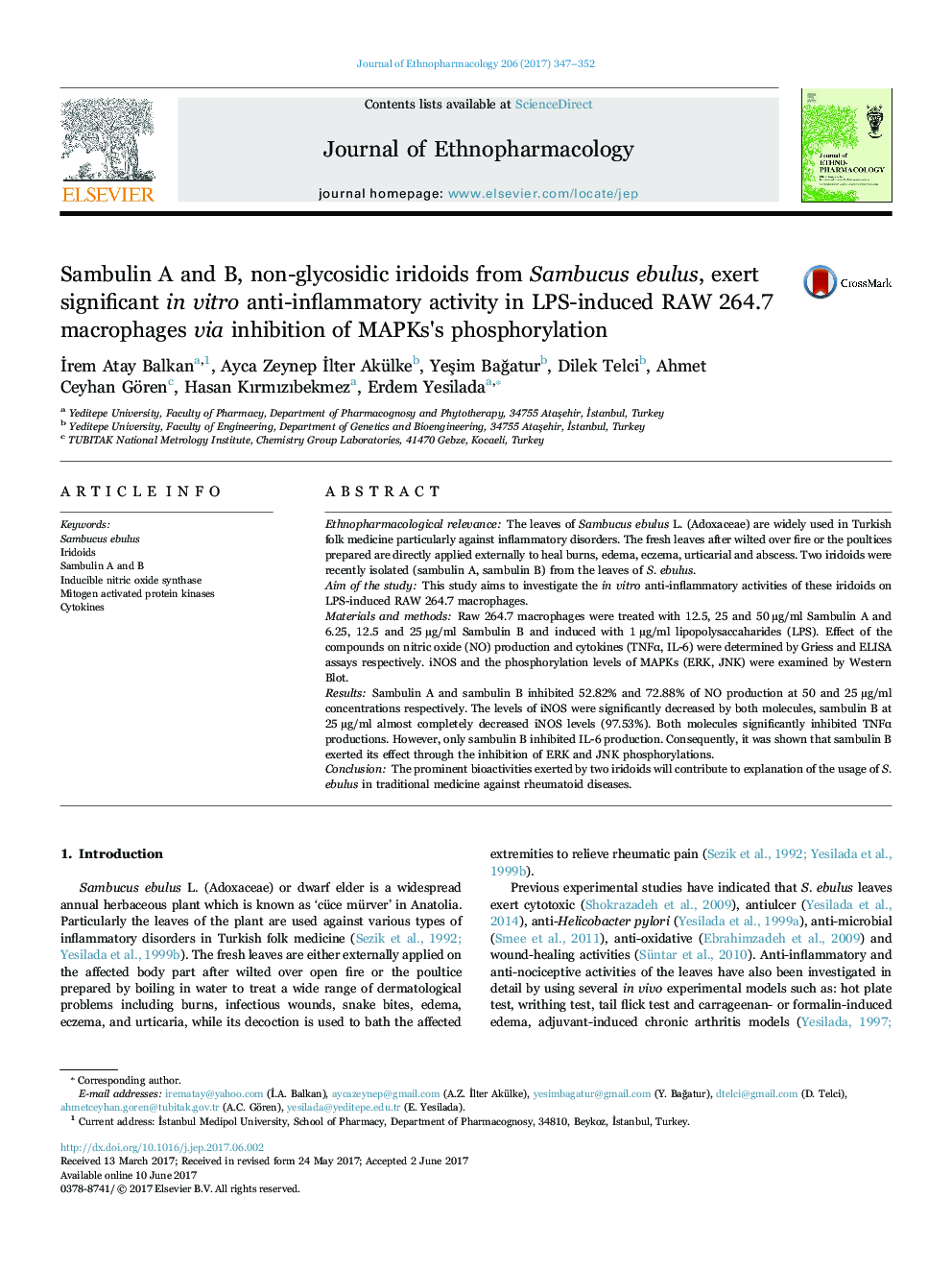| Article ID | Journal | Published Year | Pages | File Type |
|---|---|---|---|---|
| 5556222 | Journal of Ethnopharmacology | 2017 | 6 Pages |
Ethnopharmacological relevanceThe leaves of Sambucus ebulus L. (Adoxaceae) are widely used in Turkish folk medicine particularly against inflammatory disorders. The fresh leaves after wilted over fire or the poultices prepared are directly applied externally to heal burns, edema, eczema, urticarial and abscess. Two iridoids were recently isolated (sambulin A, sambulin B) from the leaves of S. ebulus.Aim of the studyThis study aims to investigate the in vitro anti-inflammatory activities of these iridoids on LPS-induced RAW 264.7 macrophages.Materials and methodsRaw 264.7 macrophages were treated with 12.5, 25 and 50 µg/ml Sambulin A and 6.25, 12.5 and 25 µg/ml Sambulin B and induced with 1 µg/ml lipopolysaccaharides (LPS). Effect of the compounds on nitric oxide (NO) production and cytokines (TNFα, IL-6) were determined by Griess and ELISA assays respectively. iNOS and the phosphorylation levels of MAPKs (ERK, JNK) were examined by Western Blot.ResultsSambulin A and sambulin B inhibited 52.82% and 72.88% of NO production at 50 and 25 µg/ml concentrations respectively. The levels of iNOS were significantly decreased by both molecules, sambulin B at 25 µg/ml almost completely decreased iNOS levels (97.53%). Both molecules significantly inhibited TNFα productions. However, only sambulin B inhibited IL-6 production. Consequently, it was shown that sambulin B exerted its effect through the inhibition of ERK and JNK phosphorylations.ConclusionThe prominent bioactivities exerted by two iridoids will contribute to explanation of the usage of S. ebulus in traditional medicine against rheumatoid diseases.
Graphical abstractDownload high-res image (188KB)Download full-size image
